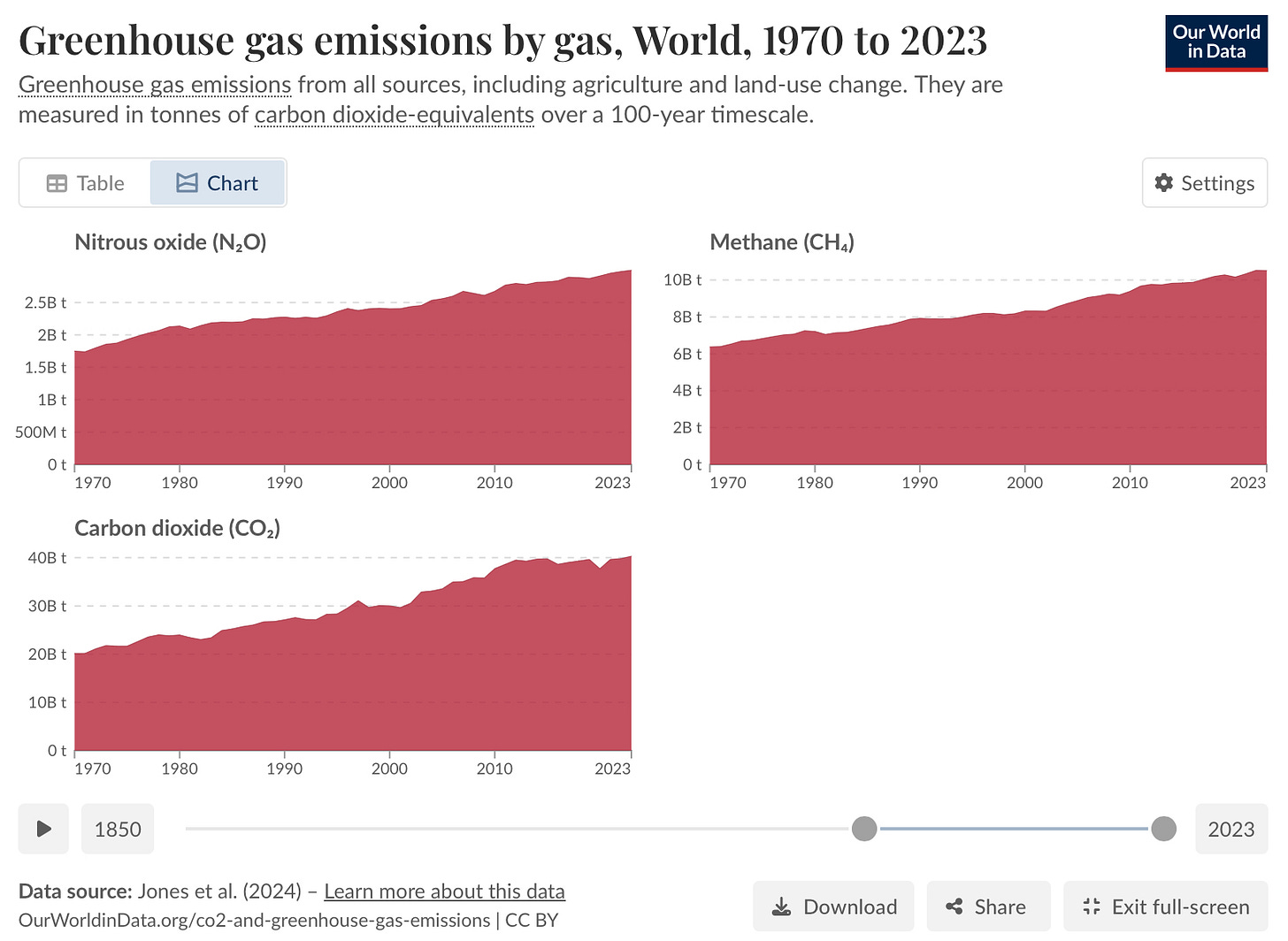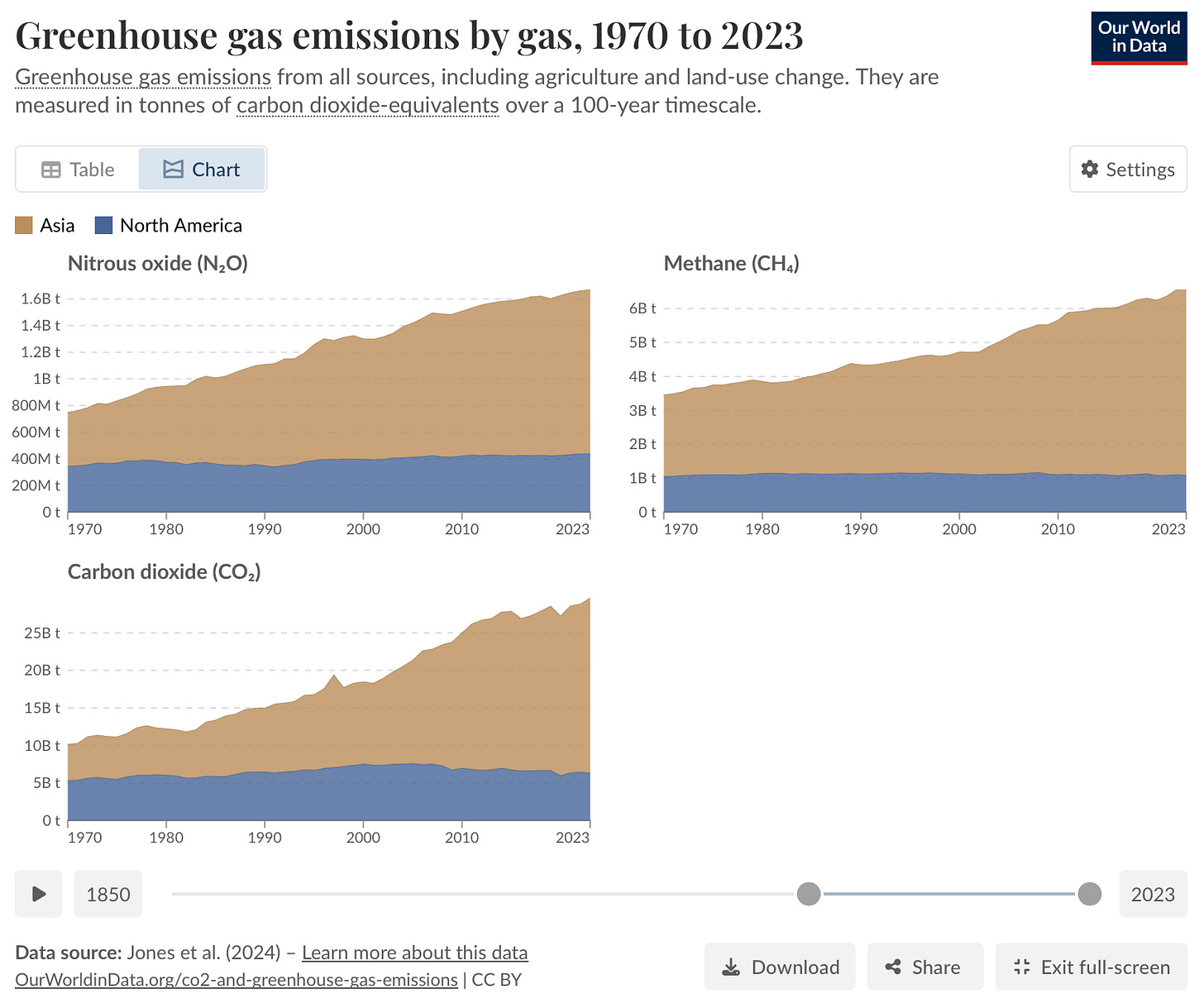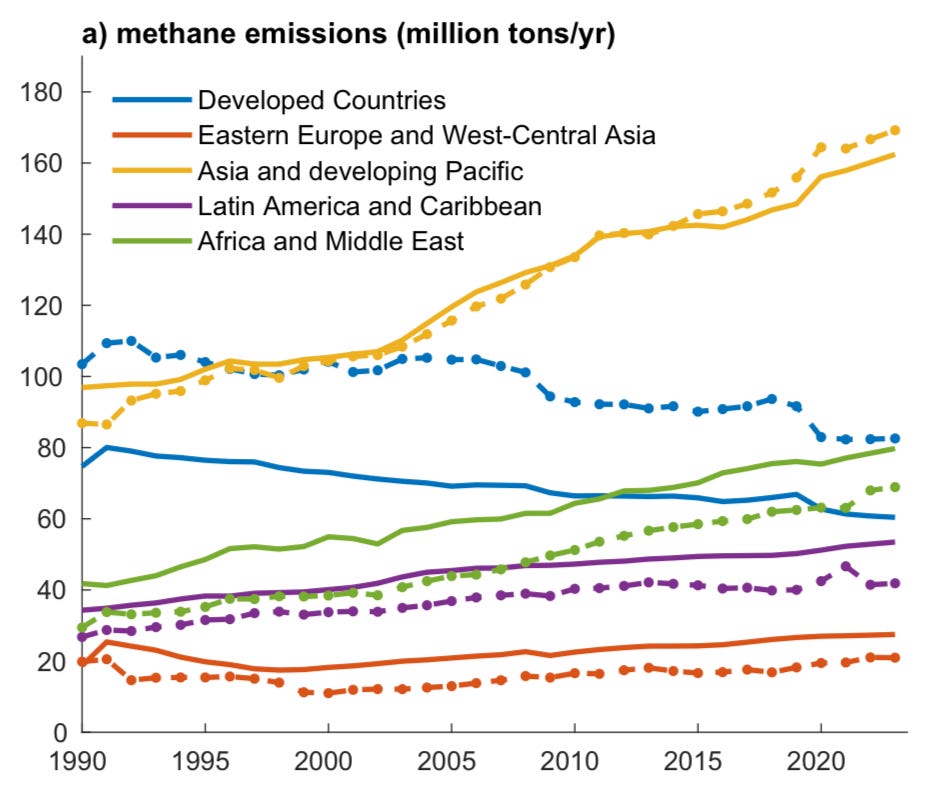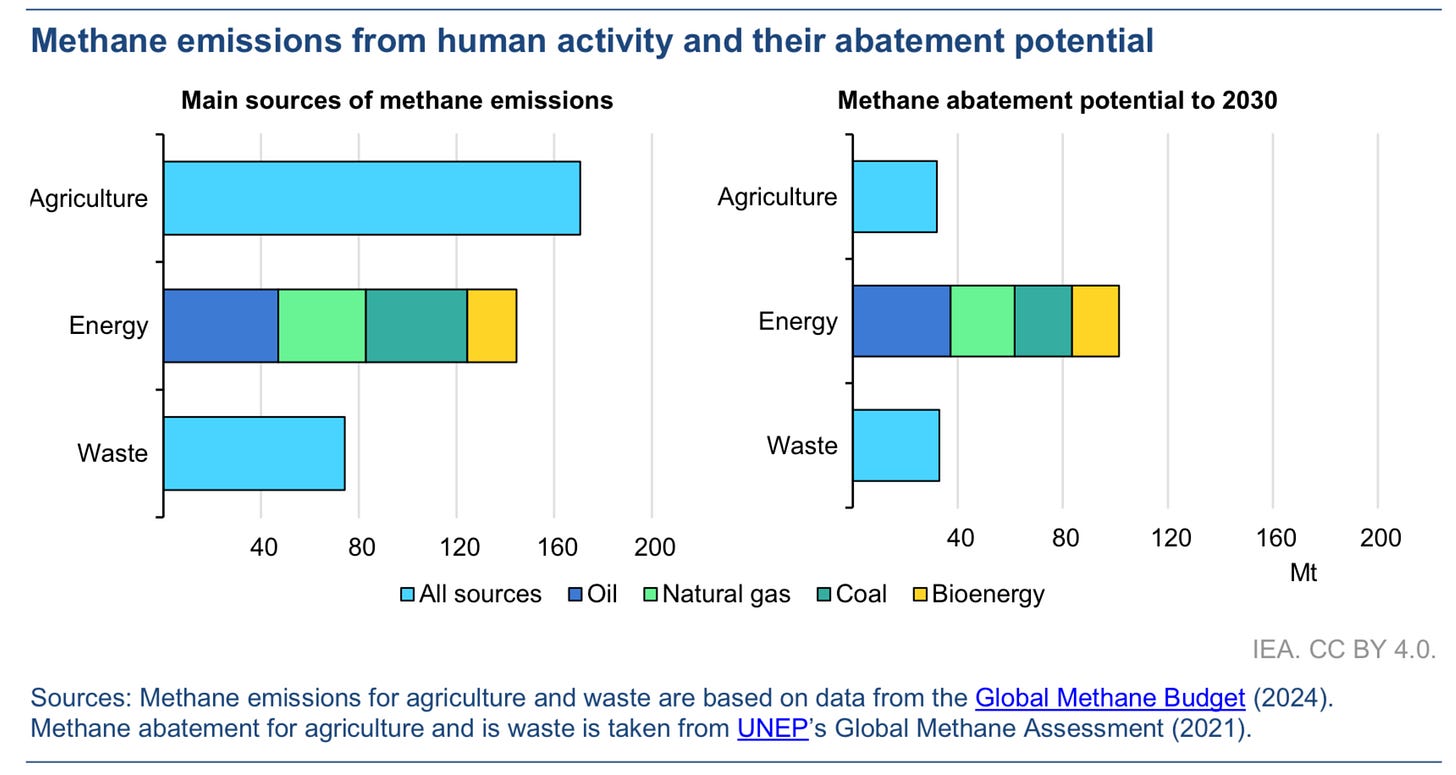Methane emissions have been a target for several years now, in large part due the high warming potential of the molecule vs CO2 (84-86x over 20 years and 28-34x over 100 years) and the potential economic value of the molecules.
Given the headline interest in reducing these emissions, I was struck by a recent paper in Nature that noted:
…global methane emissions have been growing faster in recent years, albeit with some fluctuations, which is in contrast with the recent slowdown observed in CO2 emission growth…
But the data is the data, and a bit more digging revealed the observations that follow.

Data surprises often reveal my bias. Consider a stack of North America and Asia emissions trends (see charts below). The trends are dramatically different in regions (largely split between developed and developing economies).

The paper further reinforced those differences by presenting methane emissions data in terms off “production-based emissions (PBE) and “consumption-based emissions (CBE)”, where:
Production-based emissions (PBE) refer to emissions emitted within a specific country or region during the production of goods and services, encompassing all economic activities and sectors of a country (to answer the question of where emissions arise). Meanwhile, the consumption-based emissions (CBE) allocate the emissions to the countries where the goods are consumed (to answer why we have these emissions or the ultimate drivers of emissions). It offers a different insight into understanding countries’ emissions along the entire global supply chain.
One chart that stood out is below and shows PBE (solid lines) and CBE (dashed lines) by regions. View through this lens the degree to which developed nations (in blue) have offshored their methane emissions (observable by the solid line below the dashed line) is apparent. In contrast CBE and PBE are similar (production and consumption emissions are similar) in Asia and developing Pacific, and CBE lower than PBE in the remaining regions (production emissions are greater than consumption).

The downward trend in developed country emissions (on both a consumption and production basis) reflects the attention this issue has received. The energy industry has particularly been subject to scrutiny and one might assume that the industry is the leading source of anthropogenic methane emissions. Instead, it is agriculture that is the biggest offender (see below). Improvement requires action and when cast in terms of abatement potential, energy takes top spot (according to the IEA).


